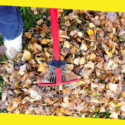10 Essential Home Maintenance Tips for Every Season
Maintaining a home is a continuous process, with each season presenting unique challenges and opportunities to enhance your living space.
As a homeowner, it’s important to stay ahead of these seasonal demands to ensure your home remains comfortable, safe, and energy-efficient all year round. From the thaw of spring to the chill of winter, proactive home maintenance is key to avoiding costly repairs and preserving the value of your property.

This guide is designed to provide homeowners with essential tips for each season, covering a wide range of tasks from roof inspections to HVAC maintenance. Whether you’re a new homeowner or looking to refine your existing home care routine, these tips will equip you with the knowledge to keep your home in top condition, adapt to the changing weather, and prepare for the months ahead.
With the right approach and regular attention, you can turn home maintenance into a manageable and rewarding part of homeownership.
Contents
Toggle1. Spring: Clean Gutters and Downspouts
In spring, focus on your gutters and downspouts. Winter debris can clog these systems, leading to water damage. Start by removing leaves, twigs, and other debris from the gutters. Check for any leaks or holes and repair them promptly. Ensure downspouts are directing water away from your home’s foundation to prevent basement flooding or erosion around your home.
Consider installing gutter guards to minimize future debris accumulation. This maintenance is crucial for protecting your home’s structural integrity and preventing costly water damage repairs.
2. Summer: Service Your HVAC System
During summer, ensuring your HVAC system is functioning optimally is vital for a comfortable home environment. It’s a key element of your home’s overall heating and cooling efficiency.
Companies like Varsity Home Service offer comprehensive servicing to ensure your system is in top condition. This includes replacing or cleaning air filters, checking coolant levels, and inspecting condenser coils for damage. Regular maintenance from professionals skilled in heating, cooling, and plumbing services not only maintains a comfortable home environment during the hot months but also prevents costly breakdowns and promotes efficient operation. A well-maintained HVAC system is essential for comfort and health during the hot summer months.
3. Fall: Check Your Roof
Before harsh weather arrives, inspect your roof for any signs of wear or damage. Look for cracked, loose, or missing shingles, which are common problems that can lead to leaks. Check flashing around chimneys and vents for damage or gaps. Clean any debris from the roof to prevent water pooling and inspect for signs of moss or algae, which can indicate moisture issues. If you’re not comfortable doing the inspection yourself, hire a professional roofer. Addressing small issues in the fall can prevent more significant and expensive repairs in the future.
4. Winter: Insulate Pipes
Insulating pipes, particularly in unheated areas like basements, attics, and garages, is vital to prevent freezing and bursting in winter. Use foam insulation sleeves or wrapping tapes for exposed pipes. Keep cabinet doors under sinks open during extremely cold spells to allow warm air circulation. Letting a trickle of water run through the pipes can also prevent freezing. Check outdoor faucets and hoses, ensuring they’re drained and shut off. These steps can save you from the extensive damage and high costs associated with burst pipes.
5. Spring: Test Smoke and Carbon Monoxide Detectors
Testing and maintaining smoke and carbon monoxide detectors is a crucial spring task. Replace batteries and test each unit to ensure they are working correctly. Vacuum the units to remove dust that can hinder sensors. Consider replacing detectors every ten years or as recommended by the manufacturer. Properly functioning detectors are vital for early warning in the event of a fire or carbon monoxide leak, making this a critical safety measure in your home maintenance routine.
6. Summer: Clean and Repair Outdoor Spaces
Summer is ideal for maintaining outdoor living areas. Start by cleaning decks, patios, and outdoor furniture. Inspect wood decks for signs of rot or damage and make necessary repairs. Re-stain or seal wood surfaces to protect them from the elements. Trim overgrown bushes and trees, especially those close to your house, to prevent damage and maintain curb appeal. Regular maintenance of these spaces not only extends their life but also enhances your enjoyment of outdoor summer activities.
7. Fall: Seal Gaps and Leaks
Sealing gaps and leaks can significantly improve your home’s energy efficiency. Inspect around windows, doors, and vents for drafts. Use weather stripping or caulk to seal any gaps, keeping your home warm and reducing heating costs. Check insulation around electrical outlets and light switches, especially on exterior walls. These small fixes can make a big difference in your home’s comfort during the colder months and lower your energy bills.
8. Winter: Check Insulation
Ensuring your home is well-insulated is key to comfort and energy efficiency in winter. Inspect attic insulation, ensuring it’s evenly spread, and there are no bare spots. Check the insulation in your walls, if possible, and consider adding more if it’s insufficient. Insulating your basement and crawl spaces can also significantly reduce heat loss. Proper insulation keeps your home warm, reduces strain on your heating system, and lowers energy costs, making it a crucial winter maintenance task.
9. Spring: Prepare Your Garden
Preparing your garden in early spring sets the stage for a beautiful outdoor space. Clear out winter debris and dead plants. Prune trees and shrubs before new growth begins. Turn over the soil in garden beds and add compost or fertilizer to enrich it. Plan your planting for the season, considering local climate and soil conditions. Early preparation ensures your garden is ready to thrive in the warmer months, enhancing your home’s outdoor appeal.
10. Summer: Maintain Your Home’s Exterior
Summer is the best time to maintain your home’s exterior. Inspect the paint and siding for any damage, cracks, or peeling. Repair and repaint as needed to protect your home from weather damage and maintain its appearance. Check the foundation for cracks or signs of movement and address any issues promptly. Clean windows and repair any damaged screens. Regular exterior maintenance not only keeps your home looking its best but also prevents long-term structural issues.
Conclusion
Staying on top of seasonal home maintenance is crucial for any homeowner. By following these essential tips, you can ensure that your home remains in excellent condition throughout the year, tackling challenges specific to each season.
Regular maintenance not only helps in preventing unexpected repairs but also enhances the comfort and safety of your living space. By investing time and effort into these tasks, you are not just maintaining your home but also protecting your investment and ensuring a secure and enjoyable environment for you and your family.
Recommended For You
13 Home Improvement Tips to Consider Before Moving to a New Place
Most Inside
Most Inside offers high-quality recommendations and valuable updates to enhance all aspects of your life, providing premium guidance and enriching experiences.




